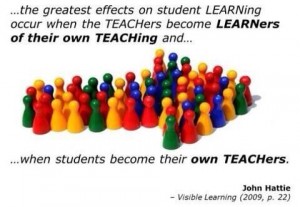“If you try to do something and fail, you are vastly better off than if you had tried nothing and succeeded.”
– Lloyd Jones

Often I write about our need to prepare for the future and how our education system must innovate and change in order to stay relevant in our world. Professionally I have served in many educational roles from social studies teacher to school administrator. When teaching social studies to eighth and sixth grade students I endeavored to bring history to life and make social studies the most engaging class it could be. I have learned and I have often reflected on the quote from Shakespeare: “What is past is prologue” and that we should learn from the past to prepare our future.
Arguably more has changed in our society in the past five years than in the previous two hundred and the rate of change, disruption, innovation, creativity, etc. is moving at a tremendous pace. Perhaps the pace is too fast for the education system. Perhaps the pace is too fast for educators and leaders and communities. Perhaps – but I think that in partnership toward the same ends, the community public school system can change, I submit it has changed in many areas, and with foresight and an understanding of the complexities of the past we can and we do prepare our students for their futures.
A friend shared the following story with me about a tale of foresight from New Oxford College in Cambridge. Its message speaks volumes about impact and legacy. The actions of today have impacts and are far-reaching in more ways than we often know. That we lay a foundation of innovation I submit will  serve to prepare the future generations and equip them to thrive in whatever society throws at them. Our challenges include seeing as far ahead as we can while we establish learning environments and systems that will sustain our way of life, culture, and education system.
serve to prepare the future generations and equip them to thrive in whatever society throws at them. Our challenges include seeing as far ahead as we can while we establish learning environments and systems that will sustain our way of life, culture, and education system.
In the 1300s at Cambridge University in England, a chapel was constructed for one of the colleges. The vaulted roof was supported by huge beams fashioned from old-growth oak. Seven hundred years later, the beams had so deteriorated that the roof was in danger of collapsing. The building required extensive renovation, including replacing the beams. But where, in our time, could those repairing the building find giant oak trees of such an age and quality as had been available to the original builders?
The answer lay right outside the chapel door. The original builders of the chapel had known that at some point far in the future, the structure would need new oak beams, and so they had planted acorns in the churchyard. Over the centuries, a grove of oak trees had grown to full maturity.
• The vision of those chapel builders—to ensure the survival of the chapel— extended hundreds of years into the future.
• Their mission—planting the acorns as a means of achieving the vision—was a step-by-step process that required planning and organization.
• Their vision and their mission were built upon their values—a solid foundation that gave direction and meaning to those things they set out to achieve.
**note the story above, while popular, is not 100% factually accurate: “…Somewhere on the land owned by the New College are oaks that are, or will one day, be worthy of use in the great hall, assuming that they are managed in the same way they were before. It is in this management by the Forester in which lies the point. Ultimately, while the story is perhaps apocryphal, the idea of replacing and managing resources for the future, and the lesson in long term thinking is not. In conjunction with the Long Now Foundation. Modified from original video and text by Stewart Brand at the Long Now Blog. –this information was retrieved on the web
We today are the acorn planters for the future! In public schools we can and we must ensure that our impact is everlasting and purposeful. The social experiment called the United States of America is still working and we can reclaim our rightful place in the community of nations by planting the right acorns today! The concept of bold, disruptive change and innovation is strong and our charge in education is to be bold like our founding fathers were in Revolutionary times.
Like they wrote in the Declaration of Independence
, our founders wrote:
“We hold these truths to be self-evident, that all men are created equal, that they are endowed by their Creator with certain unalienable Rights, that among these are Life, Liberty and the pursuit of Happiness”, and they close this powerful document with “…And for the support of this Declaration, with a firm reliance on the protection of divine Providence, we mutually pledge to each other our Lives, our Fortunes and our sacred Honor”.
They risked their lives, sacred honor and good fortune in pursuit of what they believed. The did not know for certain it would work – and they could have been killed – in fact many were killed in support of the Declaration. The point is What is past is prologue – we learn from bold leaders upon whose honor our nation was founded to guide our bold work in support of our futures!

